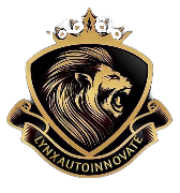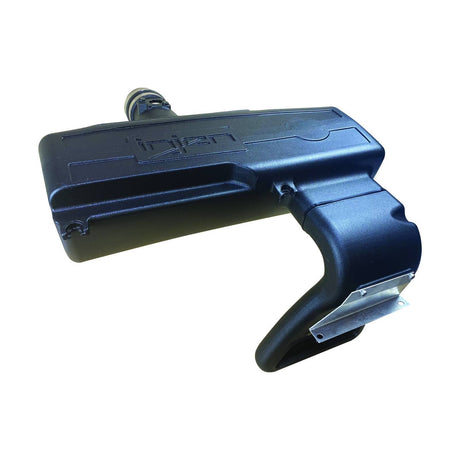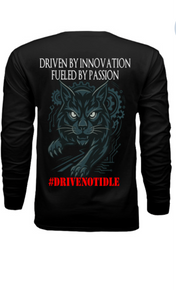Whether you’re a seasoned auto enthusiast or a daily commuter, understanding the core parts of your vehicle isn’t just smart — it’s empowering. We believe that when drivers know what’s happening under the hood, they make better decisions, maintain their vehicles longer, and truly connect with their ride. So, let’s break it down. From the heartbeat of your car to the parts that keep you rolling, here’s a complete look at the essential systems every driver should understand.
1. The Engine — The Heart of Your Vehicle
Your engine is where power begins. Think of it as a perfectly timed orchestra of air, fuel, spark, and compression working in harmony.
How it works: Air and fuel mix inside the cylinders, ignite with a spark, and create a controlled explosion — this pushes pistons, turning the crankshaft, and creating motion.
Common issues: Oil leaks, overheating, knocking, or loss of power.
Maintenance tip: Regular oil changes and clean air filters keep your engine running strong and efficient.
2. Transmission — The Power Translator
The transmission takes the power from your engine and sends it to your wheels in a controlled way. It’s what makes acceleration smooth and keeps your RPMs in check.
Types: Automatic, manual, or CVT (continuously variable transmission).
Key role: Ensures your engine operates at the right speed for each gear.
Watch for: Slipping gears, delayed shifting, or grinding sounds.
Maintenance tip: Check transmission fluid regularly — it’s the lifeblood of this system.
3. Suspension System — The Smooth Operator
Your suspension isn’t just about comfort; it keeps your tires firmly on the road for safety and control.
Main components: Shocks, struts, control arms, and springs.
Function: Absorbs bumps and maintains tire contact during turns, braking, and uneven terrain.
Signs of wear: Bouncy rides, uneven tire wear, or the vehicle pulling to one side.
Maintenance tip: Replace worn shocks or struts every 50,000 miles for optimal handling.
4. Braking System — The Safety Net
Stopping power is just as important as acceleration. Your brake system works by converting kinetic energy into heat through friction.
Key components: Brake pads, rotors, calipers, and brake fluid.
Types: Disc brakes (modern vehicles) and drum brakes (older or rear systems).
Watch for: Squeaking sounds, longer stopping distances, or a soft brake pedal.
Maintenance tip: Have your brake fluid flushed and replaced as recommended by your manufacturer.
5. Electrical System — The Spark of Life
From headlights to your ignition, the electrical system powers it all.
Core parts: Battery, alternator, and starter motor.
How it works: The battery provides energy to start the engine, while the alternator keeps it charged and powers electronics as you drive.
Common issues: Dim lights, clicking noises when starting, or a dead battery.
Maintenance tip: Keep terminals clean and test your battery health every 6 months.
6. Cooling System — The Engine’s Temperature Regulator
Without cooling, your engine would overheat in minutes.
Core parts: Radiator, water pump, thermostat, and coolant.
Function: Circulates coolant to absorb heat and release it through the radiator.
Signs of trouble: Overheating, coolant leaks, or a sweet smell from under the hood.
Maintenance tip: Flush and replace coolant every 30,000–50,000 miles.
7. Exhaust System — The Breath of Your Vehicle
The exhaust system removes harmful gases while reducing noise and improving efficiency.
Main parts: Exhaust manifold, catalytic converter, muffler, and tailpipe.
Purpose: Directs gases safely away from the engine and cleans emissions.
Watch for: Loud exhaust sounds, rattling, or the smell of fumes.
Maintenance tip: Inspect for leaks or rust, especially if you drive in wet or salty conditions.
8. Steering System — Your Control Center
The steering system connects you to your car’s every move.
Key components: Steering wheel, column, rack-and-pinion, and power steering pump.
Function: Converts your input into precise directional control.
Issues to spot: Difficulty turning, vibrations, or fluid leaks.
Maintenance tip: Check power steering fluid and inspect tie rods and ball joints regularly.
9. Fuel System — The Energy Delivery Network
Without fuel, you’re not going anywhere.
Core components: Fuel tank, pump, filter, injectors, and lines.
Purpose: Delivers the right amount of fuel to the engine for combustion.
Warning signs: Poor mileage, stalling, or hesitation when accelerating.
Maintenance tip: Replace your fuel filter as scheduled and use quality fuel.
10. Tires & Wheels — Where the Power Meets the Pavement
Your tires are the only part of your vehicle that actually touch the road.
Key role: Provide traction, absorb shock, and support the vehicle’s weight.
Check for: Uneven wear, low tread, or improper air pressure.
Maintenance tip: Rotate tires every 5,000–7,000 miles and keep them properly inflated.
--------------------------------------
Why Knowing Your Ride Matters
Understanding these essential parts helps you:
- Catch issues early before they become costly repairs.
- Drive safer by recognizing warning signs.
- Appreciate performance — knowing how each system contributes to the overall drive.
At LynXautoInnovate™, we’re not just about parts — we’re about knowledge, innovation, and empowering drivers. The more you understand your vehicle, the more confident, capable, and connected you become behind the wheel. Know your ride. Respect the machine. Drive with purpose. 💪🏻

















